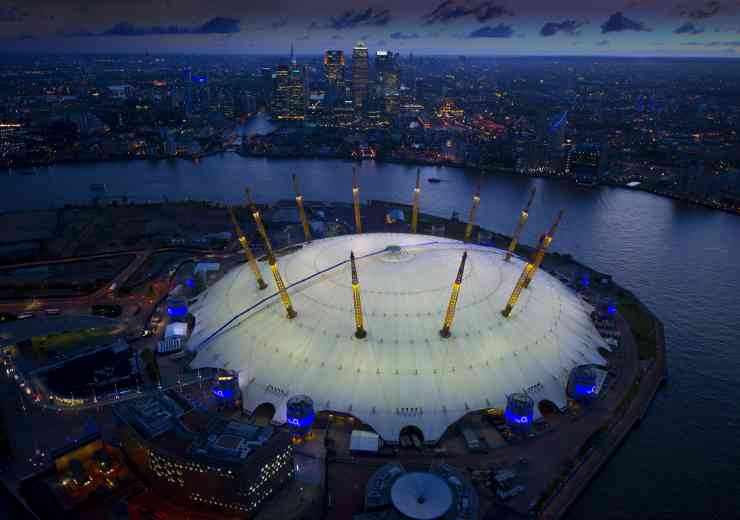
Safe in the sun: Intelligent security for major events
Physical security for large-scale events this summer need to seamlessly integrate multiple different functions and discipline, says Iain Moran
Here comes the sun…and with it, the season of large-scale events. From outdoor festivals on the scale of Glastonbury and Coachella, to major sporting competitions from Wimbledon to (various) World Cups. From enormous exhibitions and expos across almost every business sector, to cultural celebrations of drama, dance, music and everything in between.
With organisers maximising the benefits of longer days and calmer weather, we see countless events take place globally over the summer months. But with these events, unfortunately, comes a heightened risk of potential terrorist activity.
Large groups of people packed into restricted areas have long been a target of violent and criminal activity. Therefore, event organisers need to take a dynamic, multi-faceted and intelligent approach to physically securing these environments – whilst also enabling a smooth-flowing and accessible event. It can be a difficult balance to strike. Let’s take a closer look at some of the key priorities.
Managing access
The first principle of securing a major event lies in controlling who has access to said event – remembering that ‘access’ should cover both entrance and egress. As Eventbrite’s director of field operations has pointed out, ‘if there’s one thing you should worry about, it’s getting people out’. He is speaking in relation specifically to concerts, but the same principle applies to all major events. If a security incident occurs, is is essential that you are able to evacuate the area efficiently and safely – and this means not only having exit routes carefully designed and positioned, but also ensuring that attendees know exactly where they are.
Prior to this, access management needs to ensure that only authorised individuals – whether visitors or staff members – are able to enter the event. Crucially, this needs to happen without substantially slowing down the flow of people, or causing bottlenecks which can rapidly escalate. Here, again, careful design and positioning of entrance points is key, as well as smooth processes to verify each individual.
Checking belongings
As part of the authorised entrance processes, it is often necessary to check individuals’ belongings for weapons and other dangerous or unauthorised items. The stringency of these processes can vary between a brief physical check to more technical solutions including X-rays for bags and mobile scanning devices, but whatever is deemed necessary for the event in question needs to balance speed with efficacy carefully.
Event organisers should think carefully about pre-event communication to attendees warning them of what can and cannot be brought to the event; this can have a dramatic effect on speeding up the flow of entrees into the event.
The good news is that the British pubic welcome stricter security measures, with our recent research finding that 57 per cent would like to see visible security personnel, such as security guards patrolling the area, almost half (48 per cent) would welcome bag searches before they enter the venue, and a third (33 per cent) would feel more protected using metal detectors and biometric sensors.
Clear communication
Huge teams of employees, both permanent and contract, work tirelessly behind the scenes to ensure the smooth operation of major events. Clear and reliable communication channels between these teams are therefore essential both for the smooth operation of the event in question, and effective counter terror security. Should a security incident appear to be unfolding, for example, it is vital for teams to be able to alert each other, for the appropriate incident resolution staff to be informed as quickly as possible and, if necessary, for attendee security or evacuation measures to be intelligently coordinated.
Perimeter protection
As reported by CNN, terror attacks utilising vehicles have increased drastically over the past decade. Some of the most devastating terror incidents worldwide in recent years, including the 2016 Nice attack and the 2017 Barcelona attacks, have used trucks as deadly weapons. Such attacks can be both carefully planned or opportunistic, and because they are relatively simple and low-cost to initiate, it is vital for event organisers to be on their guard. The impact of such an attack can be truly devastating.
Mitigating the risk of vehicle attacks depends on truly robust and strategically designed perimeter protections, which are resilient enough to prevent the passage of even very heavy and high-speed vehicles, yet maintain the smooth flow of legitimate traffic in and out of an event. Great innovations in security bollards, road blockers and barriers have taken place in recent years, enabling perimeter protections to be installed with minimal fuss and maximum impact.
For example, many major events require a smooth flow of large vehicles in and out for installation and takedown, so perimeter protections which can be quickly adjusted to allow the passage of a vehicle, and then reinstated, such as retractable bollards, are very useful.
For public spaces in cities and towns which regularly host an array of major events, investing in permanent security measures is sensible and important. Furthermore, it is possible to use clever environmentally designed products such as impact-tested street furniture to create an aesthetically-pleasing and multi-functional approach to security, whereby visitors are seamlessly directed and kept safe without the need for heavy concrete and steel solutions.
For one-off events and more rural locations, temporary perimeter protections are more usually required, and these can be either rented or bought for maximum flexibility.
Dynamism and flexibility
Many major events are one-off occasions, or those which take place once a year, which means that much of the associated perimeter security measures need to be temporary rather than permanent. They need to be flexible and agile enough to be put up and taken down quickly, yet robust enough to provide the same powerful protection as permanent solutions. Incorporating multiple functions into a single piece of equipment can help further with overall event efficiency and cost-effectiveness. This is where modular physical security solutions, such as the Surface Guard system, come into their own. Their lightweight, compact design enable rapid installation and takedown and can be easily transported and stored when not needed. Certain products can also be enhanced with handy features such as footfall counting devices and LED lighting.
Already neater and more inconspicuous than their concrete counterparts, temporary surface-mounted barriers can often be customised using bespoke covers and vinyl wraps. Organisers can choose to accessorise the barriers purely to complement the branding of their event, or they can offer them as an advertising opportunity to sponsors. This has the benefit of creating an additional revenue stream, making security products such as these more affordable for organisers.
Smart city systems
Should the worst happen and a terrorist incident take place at a major event, it is vital for emergency services to be able to access the area rapidly, and efficiently make their way to precisely the right area. Smart city concepts, which use data and technology to improve safety and security, could play a valuable role in joining up wider urban environments with the premises or areas where events take place. For example, smart barrier solutions which work in real time could be used to isolate affected areas when an attack or incident has taken place, whilst intelligent road design could allow emergency services to reach major venues faster. A recent study we undertook into Smart City concepts showed that 63 per cent of people would like to see smart improvements to their local road systems to allow the emergency services to reach incidents faster.
An integrated approach
Above all, then, physical security for large-scale events needs to seamlessly integrate multiple different functions and disciplines. People, processes and technology need to work together, sharing information and supporting the same goals of a smoothly operating but safe and secure event.
Securing the perimeter of a major event – both in terms of managing the access of individuals, and providing protection against vehicle-based attacks – is the foundation for many facets of event security and counter terrorism. Happily, a huge variety of innovative approaches and solutions are now available to make this protection effective, cost-efficient and even aesthetically pleasing.
Iain Moran is director at ATG Access, a leading innovator of road blockers, bollard and barriers.
digital issue




















